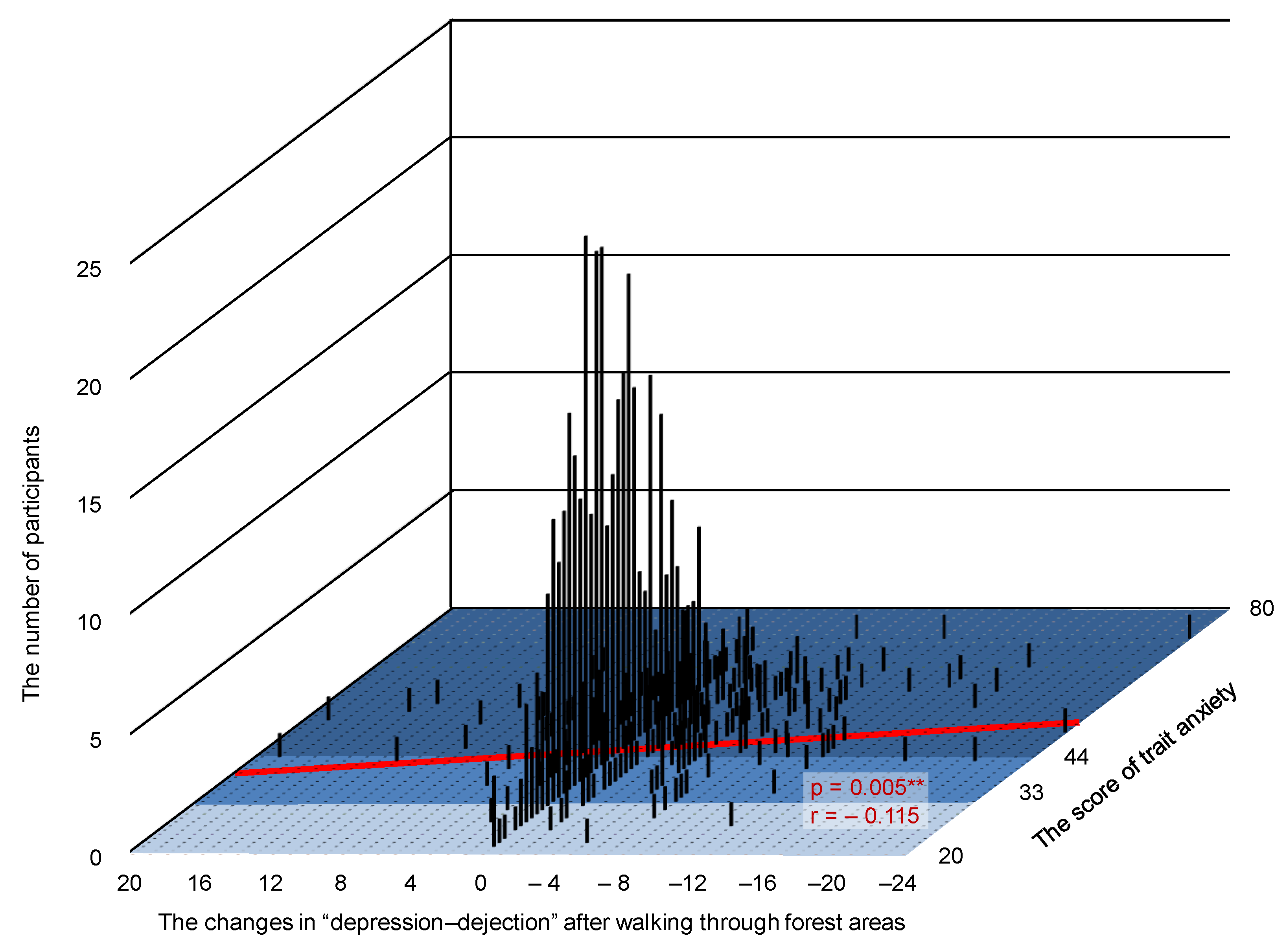Correction: Song, C.; Ikei, H.; Park, B.J.; Lee, J.; Kagawa, T.; Miyazaki, Y. Psychological Benefits of Walking through Forest Areas. Int. J. Environ. Res. Public Health 2018, 15, 2804
References
- Song, C.; Ikei, H.; Park, B.J.; Lee, J.; Kagawa, T.; Miyazaki, Y. Psychological benefits of walking through forest areas. Int. J. Environ. Res. Public Health 2018, 15, 2804. [Google Scholar] [CrossRef] [PubMed]



© 2020 by the authors. Licensee MDPI, Basel, Switzerland. This article is an open access article distributed under the terms and conditions of the Creative Commons Attribution (CC BY) license (http://creativecommons.org/licenses/by/4.0/).
Share and Cite
Song, C.; Ikei, H.; Park, B.-J.; Lee, J.; Kagawa, T.; Miyazaki, Y. Correction: Song, C.; Ikei, H.; Park, B.J.; Lee, J.; Kagawa, T.; Miyazaki, Y. Psychological Benefits of Walking through Forest Areas. Int. J. Environ. Res. Public Health 2018, 15, 2804. Int. J. Environ. Res. Public Health 2020, 17, 1316. https://doi.org/10.3390/ijerph17041316
Song C, Ikei H, Park B-J, Lee J, Kagawa T, Miyazaki Y. Correction: Song, C.; Ikei, H.; Park, B.J.; Lee, J.; Kagawa, T.; Miyazaki, Y. Psychological Benefits of Walking through Forest Areas. Int. J. Environ. Res. Public Health 2018, 15, 2804. International Journal of Environmental Research and Public Health. 2020; 17(4):1316. https://doi.org/10.3390/ijerph17041316
Chicago/Turabian StyleSong, Chorong, Harumi Ikei, Bum-Jin Park, Juyoung Lee, Takahide Kagawa, and Yoshifumi Miyazaki. 2020. "Correction: Song, C.; Ikei, H.; Park, B.J.; Lee, J.; Kagawa, T.; Miyazaki, Y. Psychological Benefits of Walking through Forest Areas. Int. J. Environ. Res. Public Health 2018, 15, 2804" International Journal of Environmental Research and Public Health 17, no. 4: 1316. https://doi.org/10.3390/ijerph17041316
APA StyleSong, C., Ikei, H., Park, B.-J., Lee, J., Kagawa, T., & Miyazaki, Y. (2020). Correction: Song, C.; Ikei, H.; Park, B.J.; Lee, J.; Kagawa, T.; Miyazaki, Y. Psychological Benefits of Walking through Forest Areas. Int. J. Environ. Res. Public Health 2018, 15, 2804. International Journal of Environmental Research and Public Health, 17(4), 1316. https://doi.org/10.3390/ijerph17041316








